
I’ve been trying to find the best light for painting for a while now, preferably one that I could use both during the painting process and for lighting my art studio.
My place has 3 rooms that I paint in and the glare on my palette from the windows can make it harder to mix colors properly.
I have a glass palette and mostly use oil paints, which have a natural sheen on their own, hence why it was very important for me to find a lighting setup that won’t distort the colors while also providing a comfortable space for me to work in.
After testing about 30 different options, I picked the lights matched my needs the best.
I think that the Joosenhouse LED is the most universal light on the market that should satisfy most people. This product is supplied with an ETL certificated dimmable driver that allows you to set this sconce wall light anywhere within the 5%-100% dimming range. This is very convenient, as this light source is perfectly suited for both my home studio and exhibition halls.
I would also like to highlight the Yuichoy 2 Pack, a lamp that did a fantastic jump illuminating the paintings in my art studio. It has a 270° rotating head and 180° rotating pole, allowing me to get the perfect angle for any situation. Since my paintings come in drastically different sizes, this option has won me over with its flexibility.
Since a lot of experienced artists rely on north light for their work, I also thought I could use it to properly choose the colors and hues for my paintings.
My biggest issue was the shorter winter days. I live in Alaska, so I only get about 3-4 hours of proper natural lighting during the winter months, which isn’t enough if you want to be a professional artist like me. I also concluded that using regular light bulbs isn’t a viable solution to fix the problem of insufficient lighting. Afterward, I decided to make a DIY ring light, but the results weren’t to my liking.
In the end, I had to admit that even though north-facing windows might offer the best natural light for painting, they aren’t the optimal solution for me, especially since I often have to paint at night.
My next step was getting a premium track lighting setup designed specifically for artists. I stumbled upon this product in an art magazine ad. It was Bravsekai and I had to pay $160 per set while getting two packages to ensure my entire art studio had enough lighting.
This set uses halogen bulbs that can heat up quite a bit. They also added glares and bright spots to my canvas, making it more difficult to work. The ability to rotate the lights was a much-welcomed one, but determining the optimal angle was very challenging.
As I had no idea there were any better options out there, I employed this track light for multiple years. I often paired it with north light, different fluorescent lights, and sometimes even strobe lights for photography.
Taking pictures of my artwork was also difficult because of the tiny bright light spots added to the paint texture. I had to waste hours in Photoshop deleting the glares before I could post the pictures on my site.
As such, I was constantly in search of an optimal solution that would satisfy all my needs. That’s why I decided to determine the main factors that should be accounted for when picking the best light for painting and used them as guidelines when testing different lighting systems.
When picking what type of light to use when painting, you need to factor in the CRI (Color Rendering Index) and Color Temperature, as they have a tremendous effect on the produced lighting.
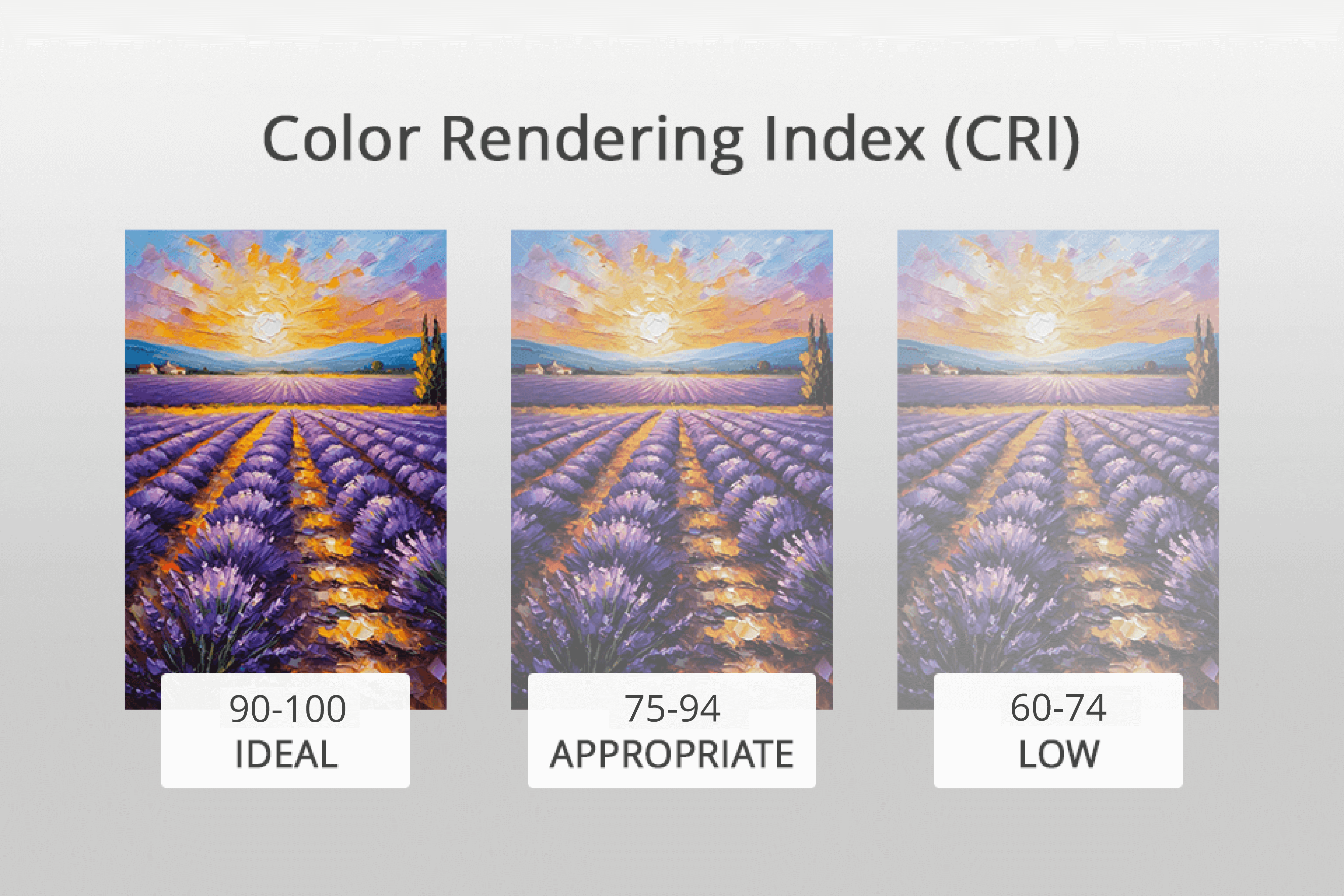
CRI. This characteristic describes how colors look under a light source compared to natural sunlight. The value can range from 0 to 100, with 100 representing colors that are identical to the ones created by regular sunlight.
My fluorescent lights have a CRI index of 96. Typically, all bulbs with a CRI of 80 or higher are viable, but I recommend going with 90+ if you’re a professional artist or photographer. Otherwise, the object will look dim or unnatural.
For me, it was essential to ensure the colors I saw in my studio were the same that people would see in an art gallery or under natural lighting since most of my paintings feature nature and objects found in the outside world.
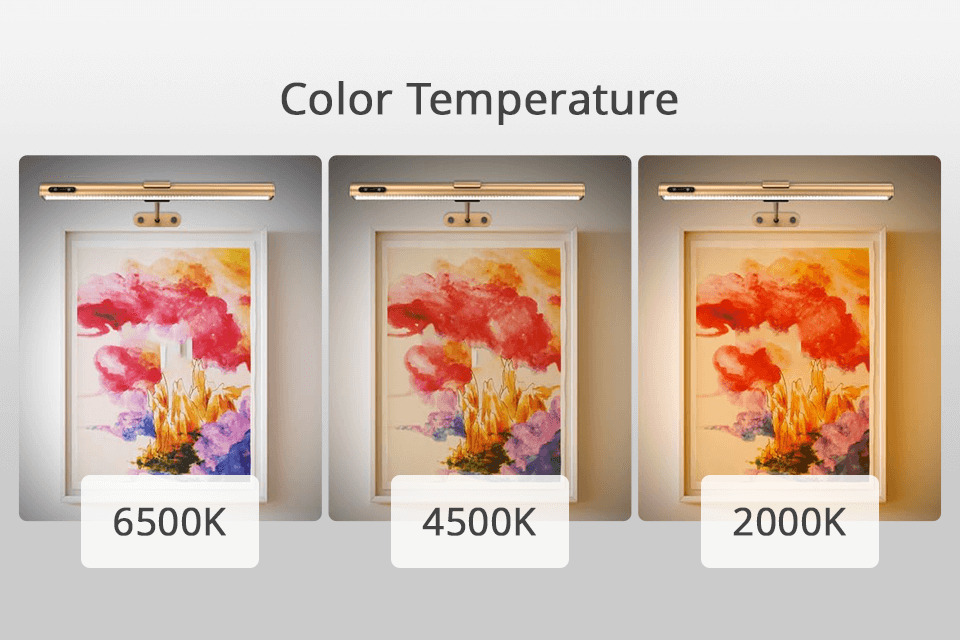
Color Temperature. This characteristic describes the appearance of the light created by a specific source. It’s measured in degrees of Kelvin (K) and can have a value between 1,000 and 10,000.
However, most lights keep the color temperature within 2000K-6500K for residential and commercial areas.
Lights with a lower value provide a warm color while higher color temperature bulbs produce a blue-white hue that resembles natural daylight. The lights installed in my studio are 5000K.
Many artists pick the optimal color temperature based on their personal preferences since everyone views colors and light in a slightly different way. That said, 5000K is usually the best option if you want a subtly cool and clean light. Such a setup will allow you to paint your artwork with a bit of warmth while preserving natural and rich colors.
You need to pick the optimal color temperature based on your studio’s location and whether you need to achieve a specific lighting tone:
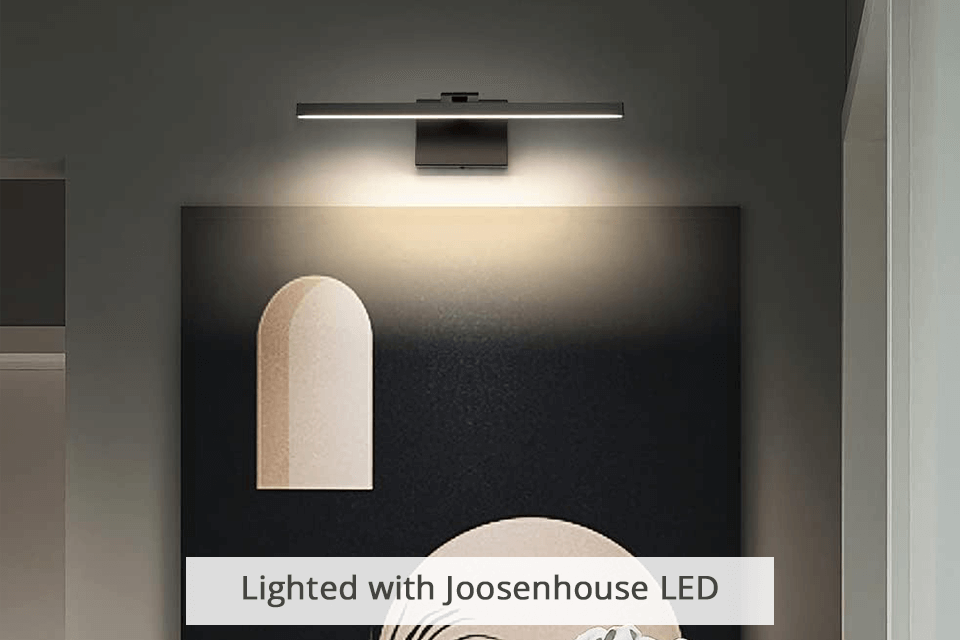
CRI: 96 | Color Temperature: 3000K | Wattage: 12W
Even though I have a couple of lighting systems at my disposal, I use Joosenhouse LED the most because I like how well this light matches the layout of my studio, which I use for showcasing my paintings and creating new ones.
I like the minimalistic design of this light that blends into the interior of my space and doesn’t distract the viewer from admiring the paintings.
This light offers a great bang for your buck while the metal build ensures it’s durable and sturdy enough for lengthy use. This lamp for artists looks great on my wall and I eventually paired it with a WiFi switch. It allows me to adjust the light with my smartphone, dim it, and even make it turn on/off automatically at scheduled times.
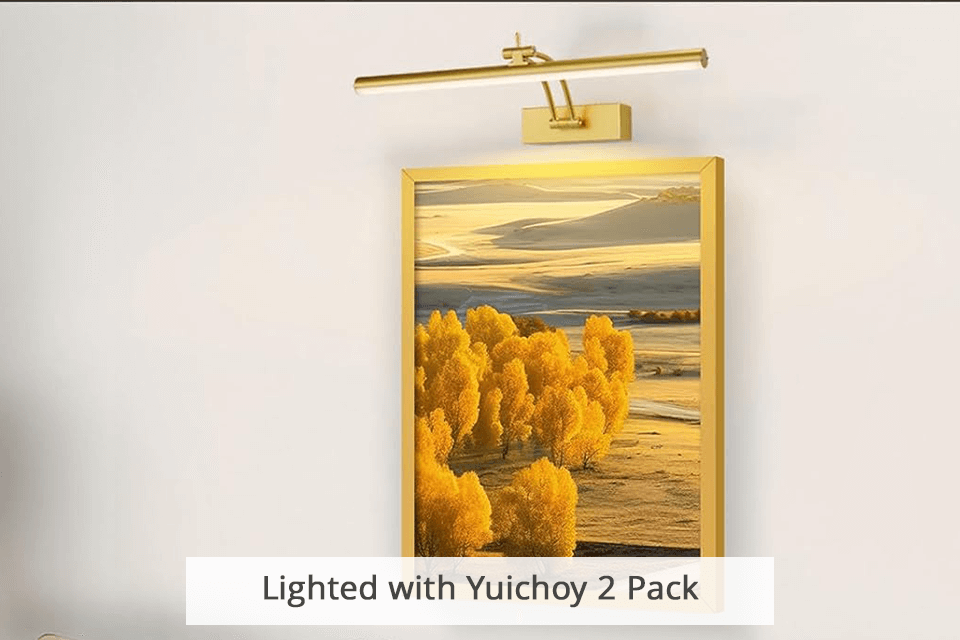
CRI: 95 | Color Temperature: 3000K | Wattage: 3W
I bought the Yuichoy 2 Pack to add it to my studio lighting kit, and I was happy to see that it can be powered both from an outlet and a battery. Even if I suffer from a power outage, the lamp will continue to work for up to 36 hours, allowing me to continue painting or showing my artwork to guests.
This lamp has a length of 16”, which is enough to add uniform lighting to all my paintings. The light is spread evenly, allowing me to change the illumination angle and aim it at the painting instead of the studio visitors.
It produced 300 lumens of warm white light, showcasing my paintings in the best way possible, whether they were created with oil paints, watercolor, acrylics, or even glitter.
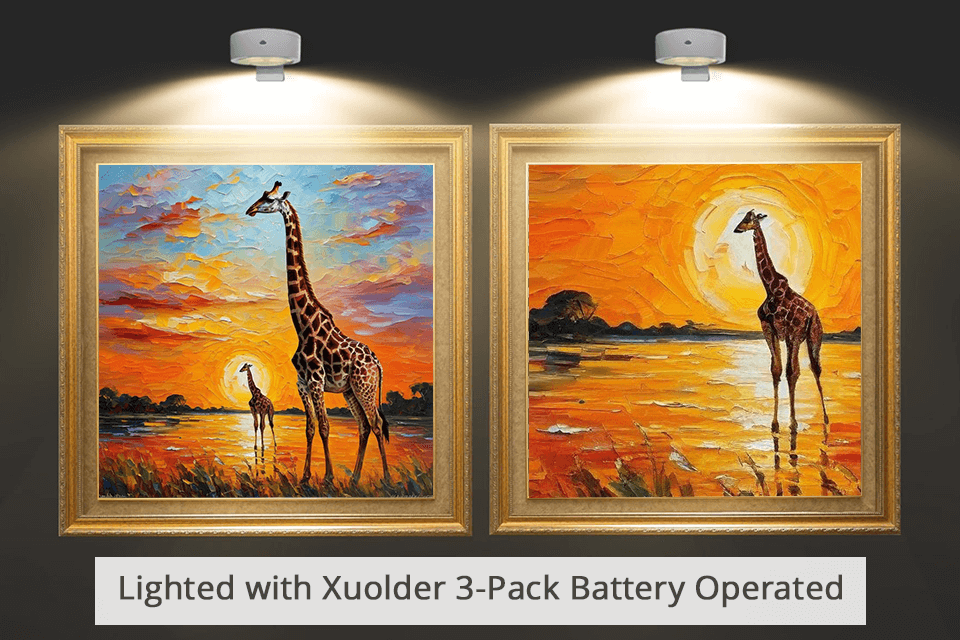
CRI: 90 | Color Temperature: 6000K | Wattage: 2W
I got two Xuolder 3-Pack Battery Operated light kits for my studio since it suffers from a severe lack of lighting, especially in the evening. I wanted to enhance the ambient lighting to make the visits of my guests more enjoyable and this set served that purpose perfectly.
I had no trouble attaching brackets to the wallboard using the included screws. I didn’t have to employ the plastic inserts since the light’s weight didn’t require them, at least in my experience.
I consider this product to be the best light for painting at night, as it lets me adjust the brightness and color temperature as I see fit. I often work during nighttime and after hours of painting, I can forget to turn the lights off. Thankfully, Xuolder’s automated timer is a true lifesaver here, ensuring these lights will continue to serve me for years to come.
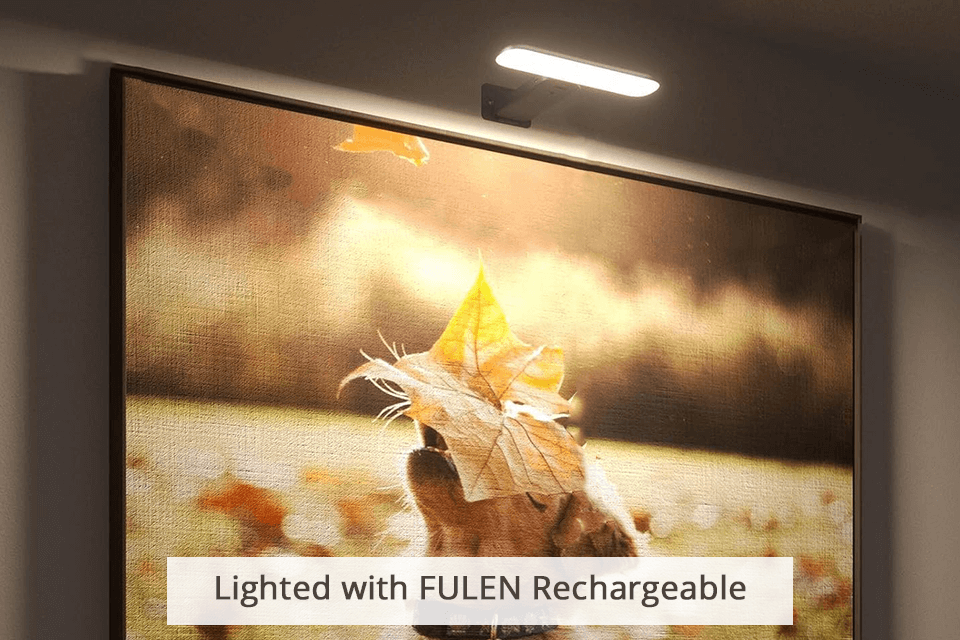
CRI: 90 | Color Temperature: 3000K | Wattage: 1.5W
I was impressed by FULEN’s ability to illuminate my paintings. This bright light comes with screws for wall mounting as well as adhesive if you’re interested in a more temporary solution.
While the lamp is lightweight enough to be upheld by the adhesive, I chose to use the screws to increase the stability of my lighting setup. This light provides different modes that allow me to adjust the brightness as well as experiment with various lighting effects.
You can pick between 3 brightness and color temperature options. That said, this lamp for drawing, isn’t universal, as it’s not powerful enough to fully illuminate large paintings, which are quite common in my gallery. However, as long as your artwork isn’t bigger than 24” in length, you should be perfectly satisfied.
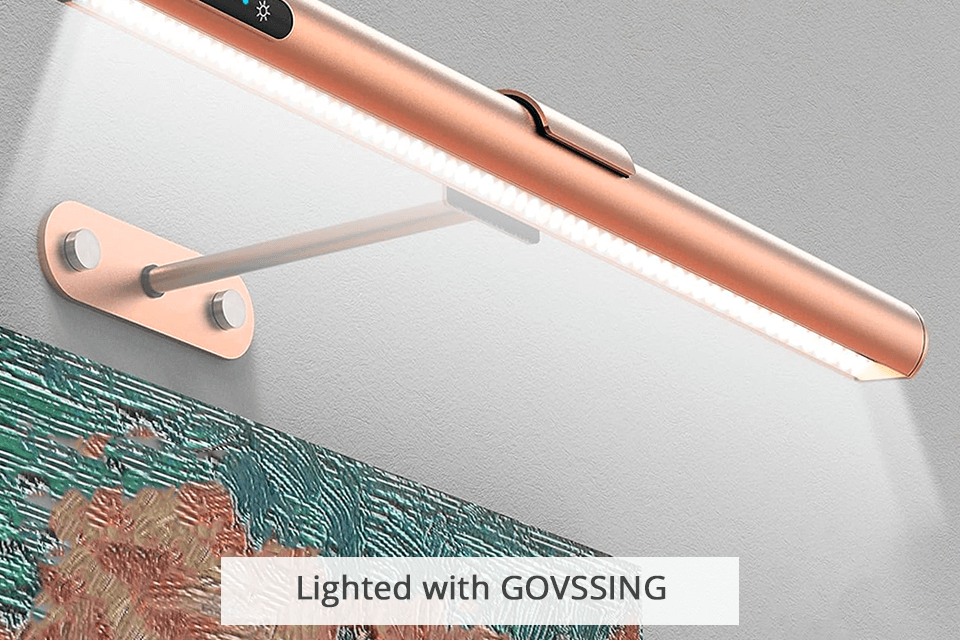
CRI: 90 | Color Temperature: 6500K | Wattage: 5W
This option is great if you want the lighting in your studio to look natural when you’re painting. You can also use it as a mood light for different kinds of exhibitions at home, in your studio, or even at a gallery.
I like that I can mount this light anywhere, be it wall or ceiling, which felt very liberating since I bought GOVSSING to add it as an additional light source for my biggest oil painting.
Setting up the light is very simple and the package comes with all the required fixtures. I also tested the magnetic mount and it felt sturdy enough as long as you properly slot the magnet into the fixture.
The biggest drawback of this option is that the provided battery dies very quickly if you set the light to maximum brightness, which was the case for me and my large painting. At high brightness, the light gradually starts to dim until it provides barely any illumination at all.
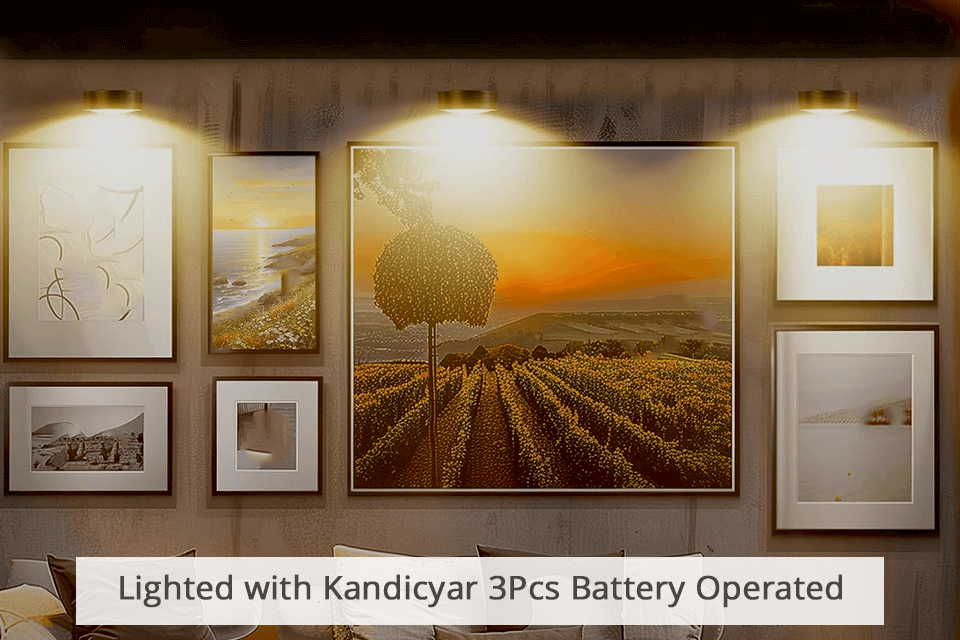
CRI: 85 | Color Temperature: 5000K | Wattage: 4.5W
My favorite aspect about this light is the provided color temperature setting that lets me switch from warm to neutral or white light in a single touch. Once attached, this light is pleasantly stable, and detaching it to swap out the batteries doesn’t require any complex manipulations.
The Kandicyar does a great job illuminating my paintings, but it’s not powerful enough to be the sole light source in my studio, so I use it more as a spare option.
When using this light, I realized that it’s better to mount it with screws since when I tried the adhesive, the lamp fell off the wall multiple times. I’m a huge fan of the soft diffused lighting provided by this LED light for photography and artworks, as it ensures the colors of my portrait look natural and vibrant.
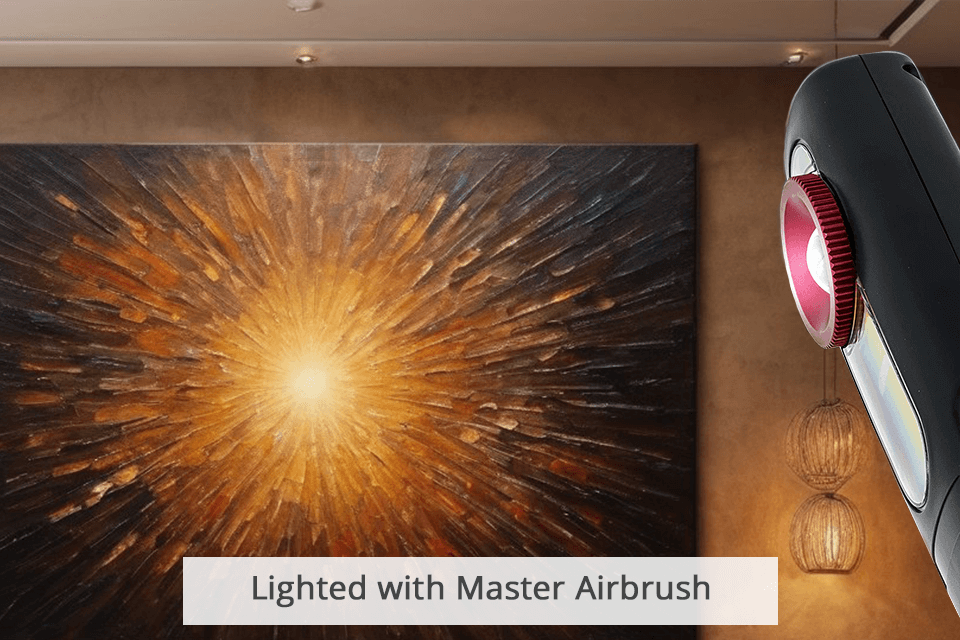
CRI: 96 | Color Temperature: 6500K | Wattage: 3W
I decided to use this light to see how well it suits my needs when I was working on a painting for my next exhibition. This lamp is very bright and allows illuminating even the smallest parts of the canvas that I haven’t painted yet.
It’s also a great fit for other everyday needs, as Master Airbrush is widely considered to be the best versatile light for painting walls.
The provided magnets are powerful and ensure the light stays in place, which helped me implement my idea of showing my painting process to my audience in real-time, which is why I also consider this model to be a fantastic light for streaming.
My biggest problem with Master Airbrush was the short battery life. Another issue is the low color temperature, which makes some colors look unnatural. I don’t use this light every day, but it still comes in handy now and then.

CRI: 85 | Color Temperature: 6000K | Wattage: 4W
I was first very skeptical about Yuewilai Magnetic Wall Sconce lights, but I got them for a conceptual exhibition in my art studio because I needed colorful lighting. However, after receiving and installing them, I was impressed by how strong they are.
This set also covers 16 different colors, covering all my exhibition needs. The colored light is also soft, which is important for me as an artist who wants to showcase my paintings instead of emphasizing the lights themselves.
I planned to mount the lights on my wall at about 3 feet off the floor and while I initially thought the magnet fixtures weren’t needed, I learned they’re pretty much essential since the lights have to be charged and the magnets let you place the lamp wherever you want.
Picture lights are designed to illuminate photos or works of art. Generally, they can illuminate anything they are attached to. Although it may seem easy to hang an object and illuminate it with light, incorrect lighting can completely ruin the concept of a photo or artwork.
Size – ideally the width of the painting. Consider choosing a light size that matches your painting. Find out the dimensions of your art object. Measure the width and the length of the picture. If an artwork has a frame, consider its size as well. If you are looking for a slim profile light, opt for a large one since it will illuminate the entire surface of the painting.
For a tall art object, you need a light setup that extends several inches from the wall to ensure it fully illuminates the artwork. A lot of artists still employ DIY photography lighting setups, but I suggest picking a suitably sized lamp even for a very large painting.
Position – top or eye level. The position of the lighting system also plays a vital role. Make sure the light beam hits the center of the artwork. Place it at your eye level. The beam should illuminate the frame in the top-to-bottom direction.
Picking the optimal light angle is also essential. If the light travels in a straight line, most likely, you’ll notice some glare. If you angle the light too much, it will cast shadows. Play around with different angles to find the right position.
Mount – wall and frame compatible. You can pick between wall and frame mounting options (ceiling and tripod mounting are a lot rarer). You can mount lights on the wall above the artwork. This is a fixed type of mount. If you have a frame mount, you should attach it to the frame. This way, you’ll have a movable mount. Both types have their upsides and downsides. The choice between them depends on your preferences and studio setup.
Light direction and spread. Choose lights that shed the light evenly across the canvas without causing glare or shadows. Rotatable lamps and light fixtures with diffusers allow you to direct and control the spread of light.
Type of light source. LED lights are often used for painting because they’re energy-efficient, last a long time, and shed a consistent, flicker-free light. That said, fluorescent and halogen bulbs are also viable options as long as they offer the necessary CRI and color temperature values.